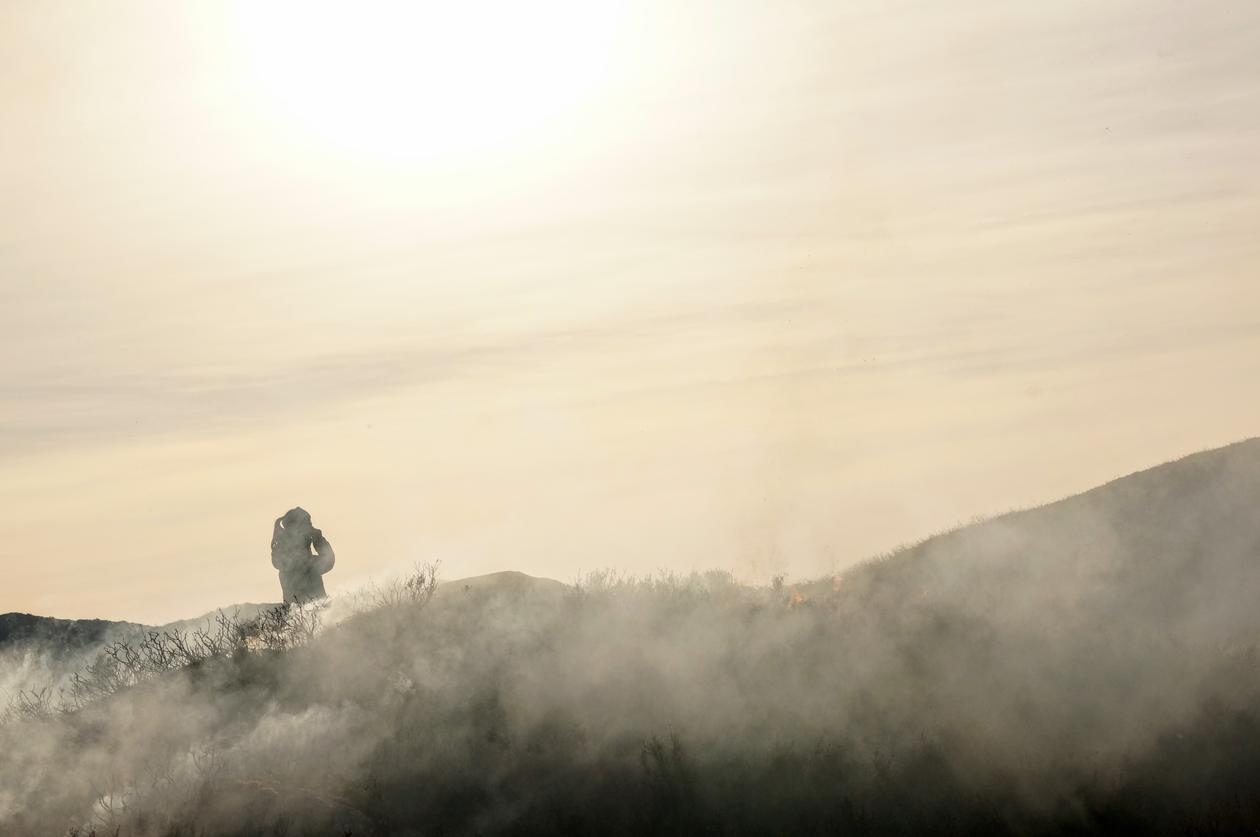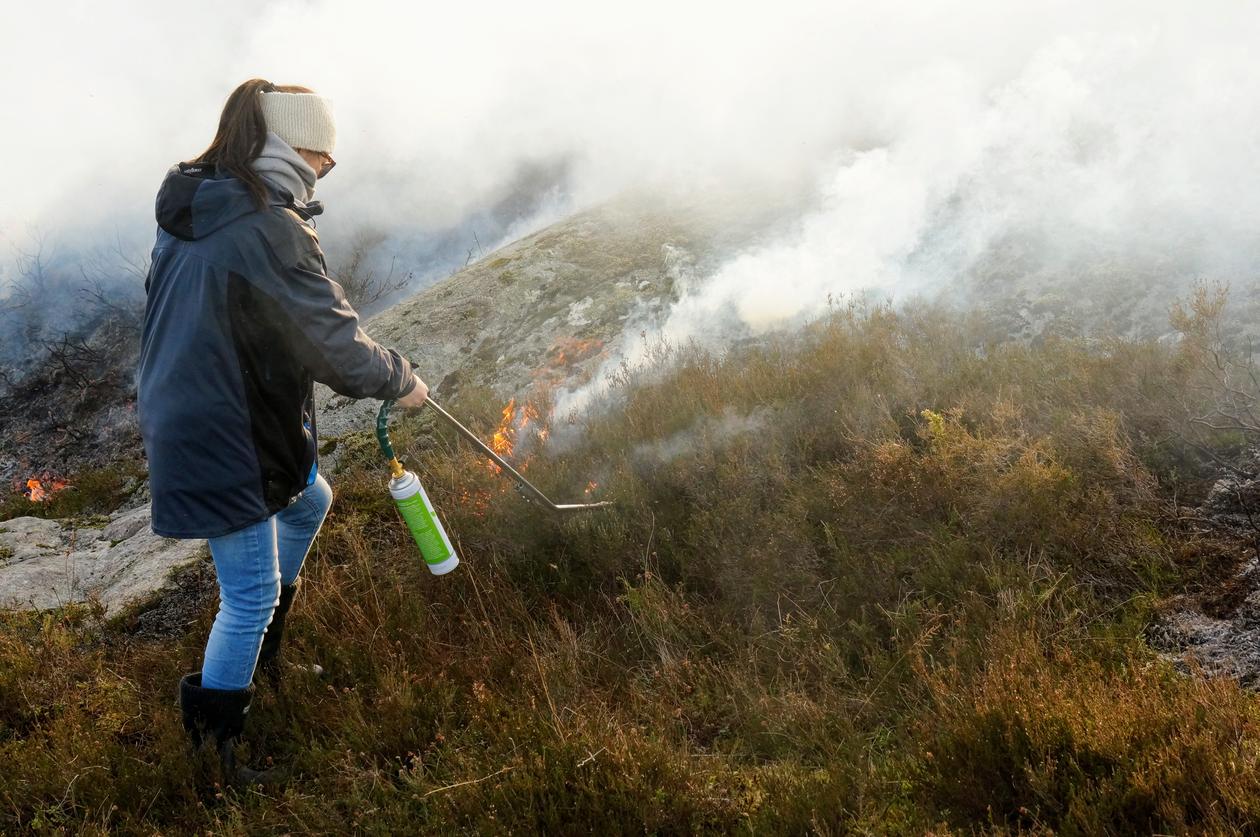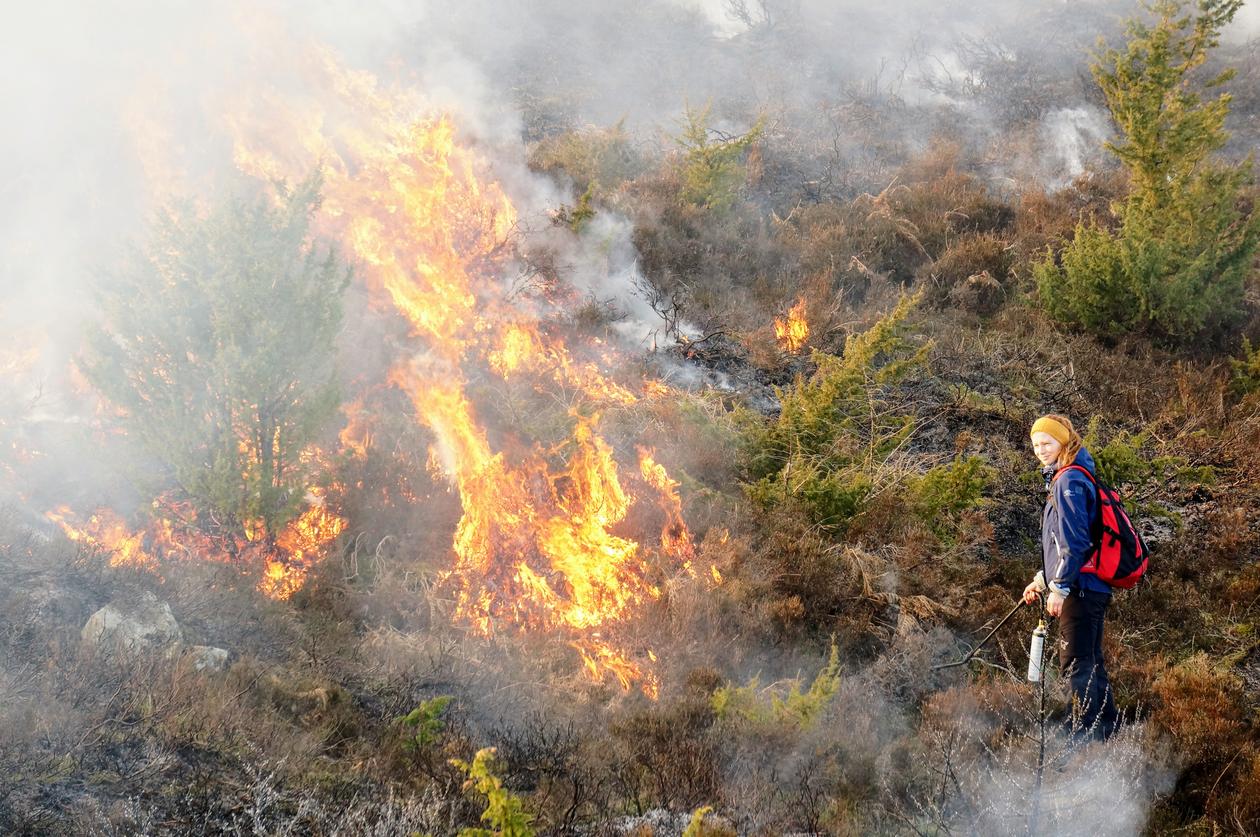Learning by burning
Cold and sunny winter days are perfect for burning off a few hectares of heath. Yes, you read it right. Students from the University of Bergen (UiB) grasped the opportunity to join heather burning on Lygra, an island just outside Bergen, last week.

Main content
The mandatory bachelor course BIO102 arranges a field course on Lygra every summer and the ecology of the heathlands is well covered in the syllabus. However, taking part in the actual burning gave the students much deeper insight into fire as a landscape-shaping force and an important factor in biomass and nutrient dynamics in the ecosystem. The response from the students was also clear: setting things on fire is fun!
Heathlands are man-made cultural landscapes created through years of burning and grazing. UiB is surrounded by coastal heathland, a cultural landscape created 5000 years ago. The key species in these ecosystems is the perennial dwarf-shrub heather (Calluna vulgaris). Sheep can graze on this dwarf-shrub during winter, making it possible to have sheep outdoor all year. However, the heather starts losing its value as a fodder plant after reaching 15 years old. Luckily, heather has the same trait as the Phoenix – it just needs some fire and then it is good to go again, either as vegetative shoots or as new saplings germinated from the seed bank. Fire also reduces the abundance of unwanted species, such as juniper (Juniperus communis) and black crowberry (Empetrum nigrum). Due to the long history of heathland burning and the ecological and social values related to heathland ecosystems, they have been an area of research for a long time. The Institute of Biology is part of the LandPress project (https://www.uib.no/en/rg/EECRG/95156/landpress) which studies how the interactions of climate and land-use affect the heathlands. The project is open for BIO299 projects or master projects (contact Siri Haugum/Vigdis Vandvik).



